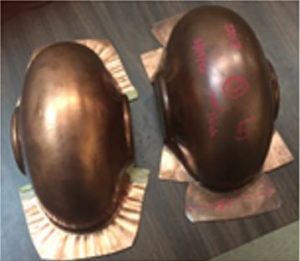Technology Summary
Superconducting Radio-Frequency (SRF) cavity resonators are very difficult to assemble, disassemble, and reassemble because the materials involved have extraordinarily high melting points. In addition, SRF cavities are manufactured with circumferential seams; the welds at these seams can alter the characteristics of the SRF current and, in turn, negatively affect the particle acceleration.
The Invention
Fermilab has developed a method for longitudinally-joining SRF cavities. By joining SRF cavities along a longitudinal seam, half-cavities can be fabricated by ordinary stamping or deep drawing. Interior surfaces can be subsequently coated by a variety of line-of-sight techniques using currently-available industrial equipment. This enables low-cost scalable production of SRF cavities.
Benefits
Fermilab’s longitudinally joined cavity technology reduces manufacturing costs, thereby encouraging broader adoption of accelerator-driven systems (ADS) and other transformational commercial and environmental applications of particle accelerators.
Applications and Industries
- Industry
- Medicine
- Security
- Science
Category: Accelerator Technologies
Tags and keywords: SRF
Invention Details
Patent Status: Patent pending
Contact:
Aaron G Sauers, CLP
630-840-4432
asauers@fnal.gov
Fermilab, MS 312 – PO Box 500
Batavia, IL 60510

